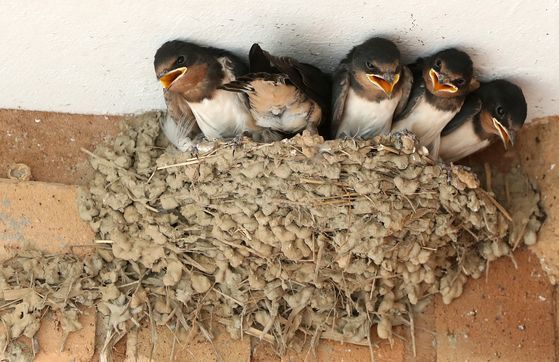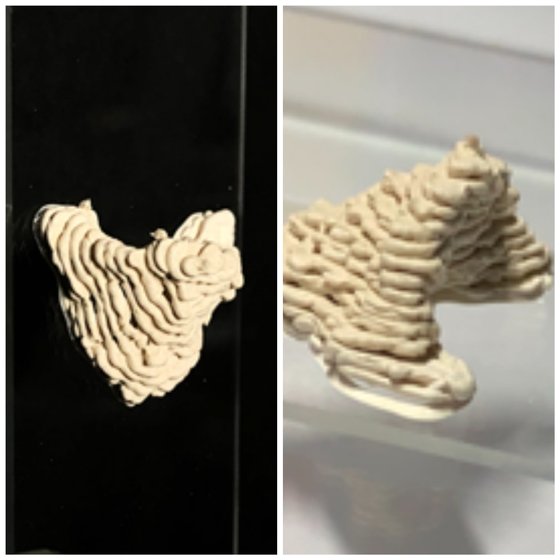Department News
[JoongAng Daily] Prof. Ho-Young Kim’s Joint Research Team: How a Swallow’s Nest Withstands 100 Times Its Weight… The Key to 3D
Author
관리자
Date
2021-01-14
Views
792
How a Swallow’s Nest Withstands 100 Times Its Weight… The Key to 3D Printing Architecture

Last spring, young swallows await for their parents in their nest under the roof of a building in Chuncheon-si, Gangwon. [Yeonhap News]
Swallows that visit Korea every spring are excellent architects. They make nests out of mud under the eaves, lay eggs, and feed their younglings. A swallow’s nest can withstand more than 100 times the weight ofe swallow. The mechanism behind this can even be applied to 3D printing architecture.
On January 12th, Seoul National University announced that a joint research between Prof. Ho-Young Kim’s team from the Dept. of Mechanical Engineering, Sogang University’s Dept. of Mechanical Engineering, and Daegu Gyeongbuk Institute of Science and Technology proposed a scientific explanation of the swallow nest.
As summer migration birds, swallows return to their mud nests every spring. From an engineer’s perspective, a swallow’s nest is a masterpiece created out of easily accessible materials, designed and constructed with the best skill. Less than 5% of the entire avian species are able to construct nests that stick to a vertical wall like swallow nests.

An artificial nest, 3D printed in proportions identical to an actual swallow nest. [Photo by SNU]
In order for the nest to stick to the wall, it needs to counterbalance the force pulling it to the ground. But mud is very weak to the pulling force. The research team discovered that when a swallow’s saliva is mixed with mud particles, the high-molecular substance contained in the saliva glues mud particles together, making it resistant to pulling force. They also found out that when building their nest, swallows especially strengthen the part of the nest that is subject to the most magnitude of force. A nest constructed in this way is able to withstand more than 100 times the weight of a single swallow.
The nest-building of a swallow is similar to 3D printing method. 3D printing architecture is able to construct buildings at a fast speed in places like disaster areas. When swallows return to their nest for breeding, they need to quickly build a new nest if the olde cannot be used again. Similar to 3D printing, swallows stack up the material layer by layer to rapidly make their nest. This blueprint is their instinct. Swallows are said to have been building nests since about 10 million years ago.
In his book On the Origin of Species, Darwin suggested that “through natural selection, swallows that made nests out of mud and saliva may have eventually evolved into a species that build nests with just their saliva,” expressing amazement at the nest-building instincts of swallows. The results of this research provides an engineering solution to the question asked by Darwin 160 years ago.
“We were able to provide a scientific explanation using 3D printing technology, mathematical modeling, and biology,” said Prof. Ho-Young Kim who oversaw the research. “We hope that biomimetic 3D printing technology using ecofriendly materials will further improve with this research.”
The research was published Proceedings of the National Academy of Sciences of the United State of America January 12th.
By Joonho Choi joonho@joongang.co.kr
Original article: https://news.joins.com/article/23968470

